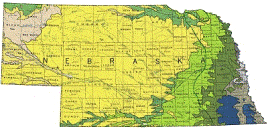US Geological Survey
ORCID IDs
http://orcid.org/0000-0001-6804-2360
Document Type
Article
Date of this Version
5-23-2018
Citation
This is a U.S. Government work
Abstract
Northern Cardinal eggs from six neighborhoods near Washington DC were analyzed for organochlorine pesticides and PCBs. All compounds were detected more frequently and at higher concentrations in more heavily urbanized neighborhoods. DDT (mostly as p,pʹ-DDE) was detected in all neighborhoods. p,pʹ-DDT was typically 0.5‒16 ng/g (ww) in most suburban neighborhoods but was not detected (< 0.1 ng/g) in more rural areas; however, p,pʹ-DDT was 127‒1130 ng/g in eggs from two suburban Maryland nests and comprised 65.7% of total p,pʹ-DDT isomers in the most contaminated sample, indicating recent exposure to un-weathered DDT. Total chlordane (sum of 5 compounds) was 2‒70 ng/g; concentrations were greatest in older suburban neighborhoods. Total PCB (sum of detected congeners) was < 5‒21 ng/g. Congener patterns were similar in all neighborhoods and resembled those typical of weathered mixtures. Results indicate that wildlife remains exposed to low concentrations of legacy contaminants in suburban neighborhoods and that cardinal eggs can be used to monitor local- ized contamination.
Included in
Geology Commons, Oceanography and Atmospheric Sciences and Meteorology Commons, Other Earth Sciences Commons, Other Environmental Sciences Commons


Comments
Bulletin of Environmental Contamination and Toxicology (2018) 100:741–747 https://doi.org/10.1007/s00128-018-2357-x